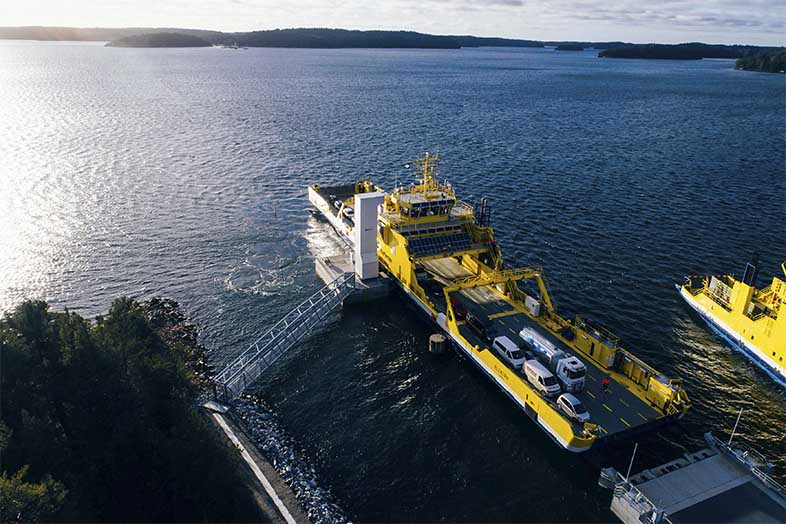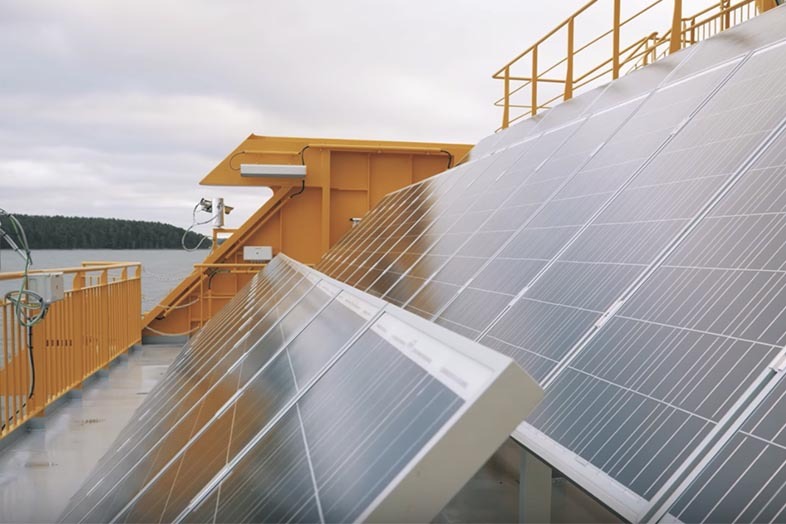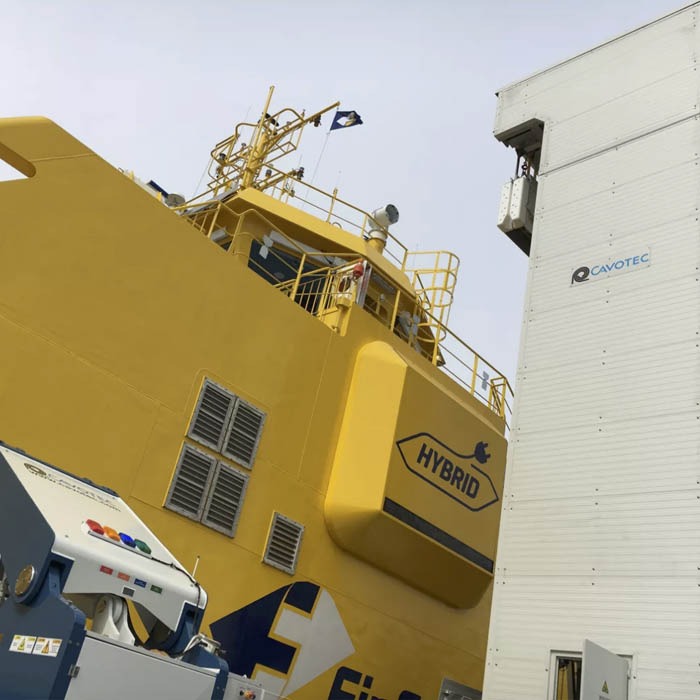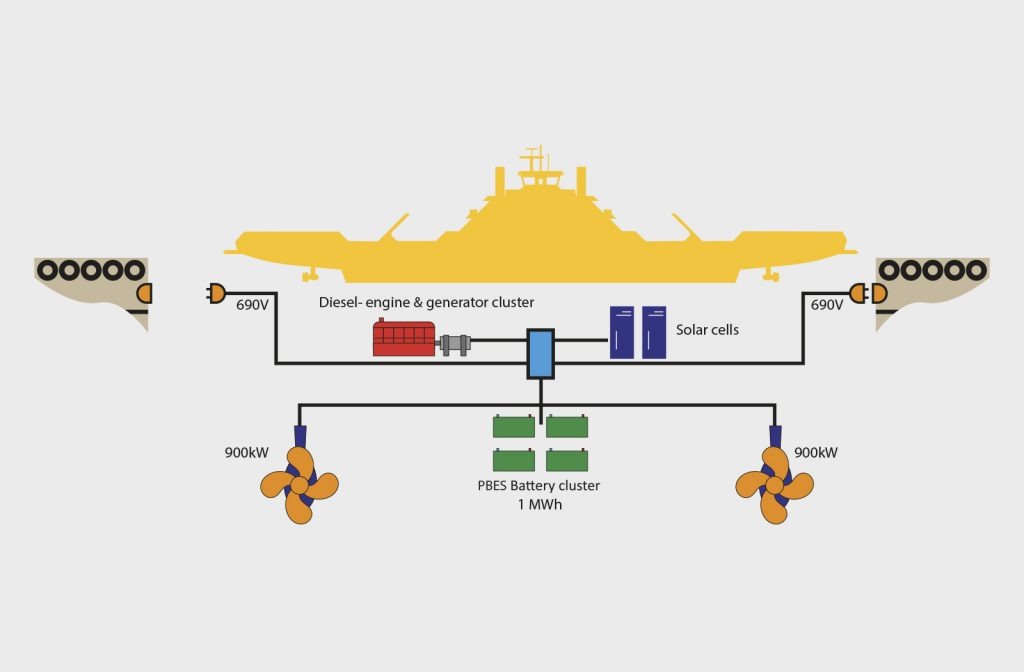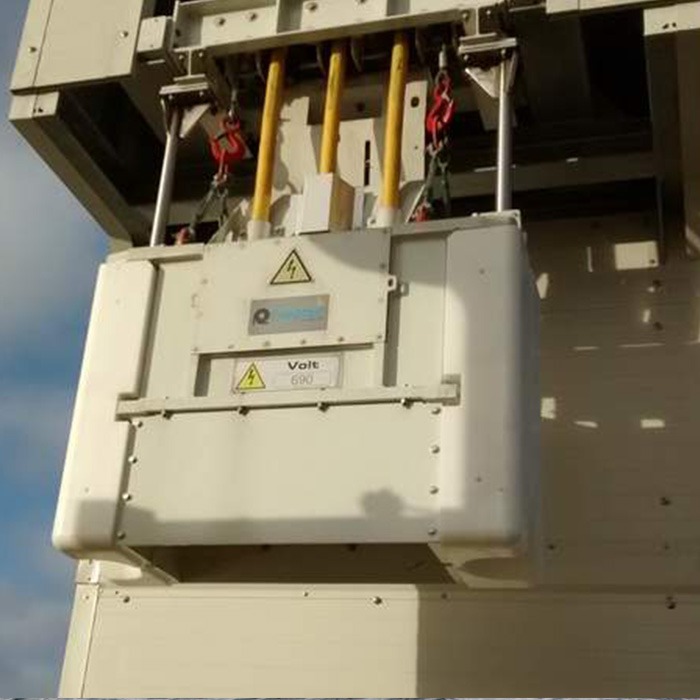Case Study
- Category: Ferry
- System: 1040 kWh
- Country: Finland
Basic info
This double-ended ferry has paved the way for a new type of ship, the hybrid/electric ro-ro. Finnish state-owned ferry operator FinFerries is only the second operator in the world to build such a vessel but remains the first of its kind to recharge its batteries at each end directly from the domestic power grid; Norwegian Ampere was the first however it draws its power from banks of batteries at each terminal. In June 2017, the Elektra began regular operation between Nauvo and Parainen in the Turku archipelago. Designed to be a 24/7 workhorse, it travels this route every 15 minutes during peak hours and once an over overnight.
The System: The two lithium-ion battery packs each have a capacity of 530 kWh (1MWh total storage), one in the forward and one in the aft machinery space. Both banks are charged simultaneously but each is dedicated to one of the thrusters. Each trip uses about 15% of the batteries’ capacity, which must be replaced during each brief port call. This energy storage system was design for a 10-year lifetime. The engine room is equipped with a pair of 900kW, Z-drive, azimuthing thrusters from Rolls-Royce, and three diesel generators –divided between two engine rooms, each deliver 420 kWh when needed. Because of the harsh winter conditions in Finland, the ferry can use diesel engines to support the onboard batteries, which serve as an extra boost travelling through ice. This gives three power modes: pure battery; diesel-battery hybrid and diesel-electric. And to add to her eco-friendly profile, just below the bridge, rows of photovoltaic cells from Activesol of Poland, provide enough power during summer months to run the air conditioning and other hotel loads.
Charging in 5 Minutes: The fast-turnaround pattern for the ferry means that it only leaves a minimal, five minutes at the quay for recharging. The ferry docks with a Cavotec vacuum auto-mooring system which holds the vessel in the right position. The Moor Masterunits signal to the APS when the ship is securely moored, before a laser sensor guides the connector that opens from the side of the vessel where it connects to the ship’s battery to begin charging. The value of energy storage compared with the existing conventional ship on the route, Sterna, Elektra carries 40% more vehicles but with 60% less emissions and the electricity cost is trivial: just €5 (US$6) of electricity per crossing.
